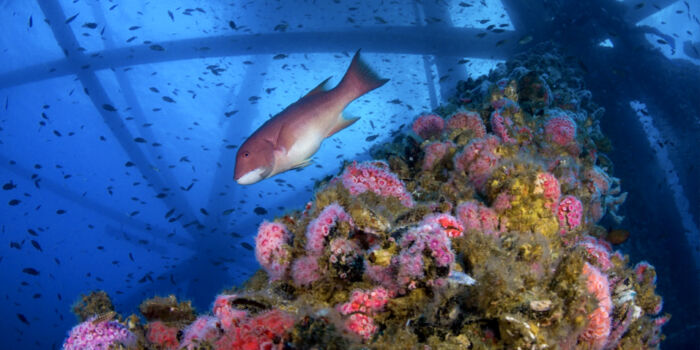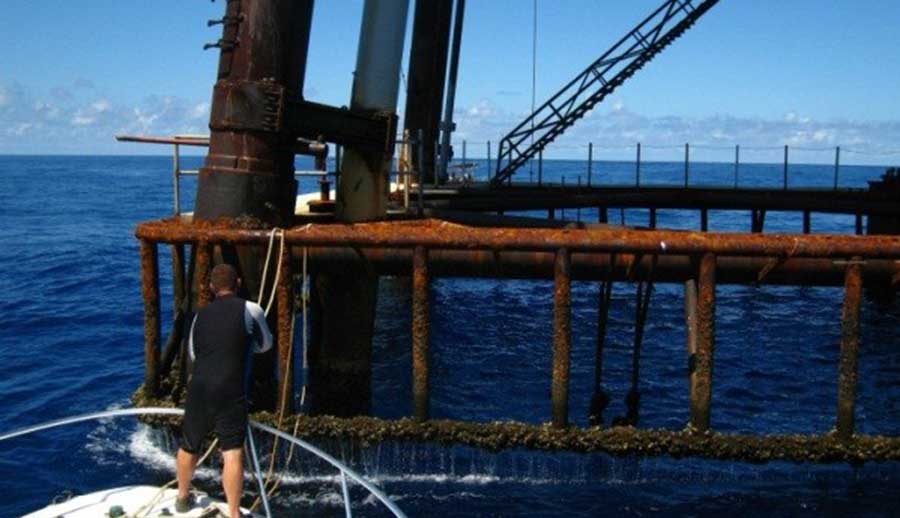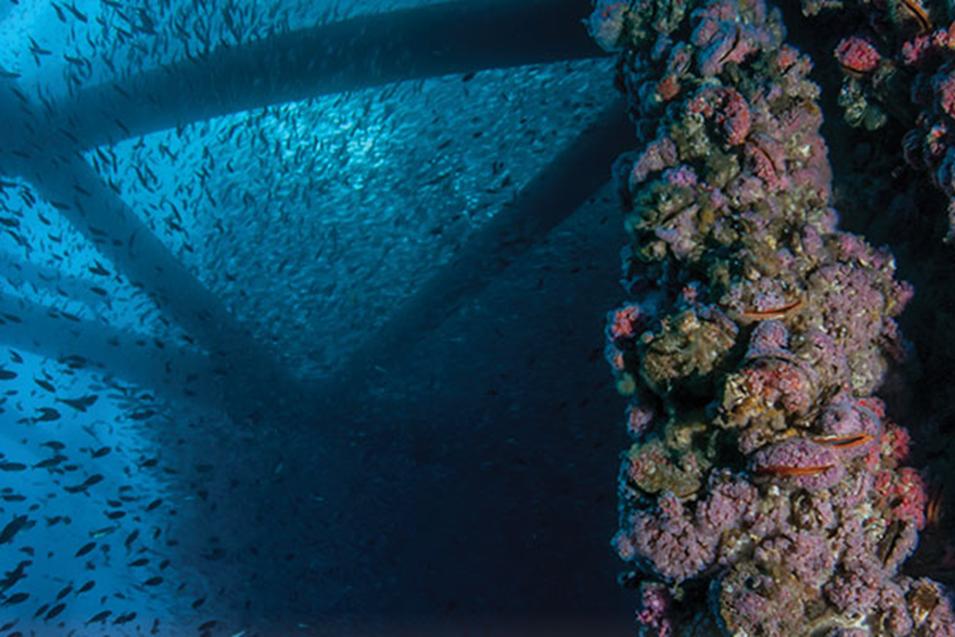Oil and gas companies utilize cutting-edge technology to extract petroleum from the ocean floor. Their offshore oil rigs can be found dotted throughout Texas and Louisiana shorelines in the Northern Gulf of Mexico; each extend from shallow depths to beyond 6,000 feet of depth. However, these “Islands of Steel” accomplish something remarkable: they serve to attract nearly all ocean predators such as Yellowfin Tuna, Sailfish, Swordfish, Marlin, Wahoo. Dolphin, Grouper, Snapper, Tilefish, Barrel Fish and other offshore predatorial fish. Fish gravitate toward stable objects like Oil Rigs. And, anyone who has spent time offshore knows this fact all too well; floating debris such as buoys or pieces of wood often attract a variety of fish as well. Smart fishermen understand that gamefish lurk beneath floating objects and debris in open waters or on the ocean floor, as baitfish use all of these structures to shelter from predators, hide from large species, and feed on smaller ones down the food chain. Offshore rigs have proven an invaluable asset in offshore fishing in Texas and the entire Gulf of Mexico in general. These valuable assets make the Gulf the most sought after fishing location in the US.
The best fishing on earth inhabits these oil rigs and platforms “Islands of Steel” off texas and across the Gulf
Bluewater fishermen along the Gulf Coast have long relied on visual indicators like birds and surface-feeding bait schools as tools to locate gamefish. Long ago, Fishing was often unpredictable until oil platforms were installed to produce oil; fishing became more reliable and fish grew larger due to the forage, yet many fishermen are unaware or have forgotten how important oil rigs can be to our fishing experience. We sometimes take them for granted. Never overlook any Oil Rig, even abandoned rigs offer anglers superb fishing opportunities from trolling to bottom fishing in shallow and abyssal depths. Currently operational working rigs, cut off rigs, floating rigs, abandoned rigs and platforms, they ALL host an abundance of sea life, coral and fish. These manmade structures consistently prove more effective for fishing than any other structures found throughout the Gulf of Mexico.
Fishing an oil rig requires you to gain an understanding of its surroundings. Begin by determining the direction of current flow; this will give you an idea of where bait might be holding to the structure; typically this will be on the upcurrent side of the rig. Once you’ve located bait fish, it is more likely than not, there will be a under currents beneath the waters surface deeper into the water column. Once this area has been found, chances are high for fishing action from a large predator such as yellowfin tuna or Wahoo, and literally just about anything will come through to feed on these bait schools gathered around the structure. Concentrate your efforts in this location and watch for signs of feeding fish on the surface, and gold hook some of that bait to use for live bait fishing around the rig, or for dropping to the bottom or into the column.
Courtesy Note: Be cautious and fully aware of oil rig activities such as supply boats loading and unloading cargo containers onto the rigs. Be a courteous fisherman and give them plenty of room to do their jobs. Recreational anglers should never obstruct any oil rig operations. Most oil rig supply boats now feature dynamic positioning technology which automatically corrects their position and secures the vessel when mooring to the rig. Move along to another rig, or fish well outside the working boats location for the time being. You’ll still likely catch fish even off the rig a good ways.
Oil Rig Fishing Tips from the Pro’s!
Fishing any oil rig usually begins with a thorough investigation of its conditions. It’s always best to circle a rig’s perimeter upon arrival. Troll the perimeter with a large Rapala (stretch 20 or 30 diving) plug or the like to tempt any predators lurking on the outskirts. While doing this, watch for
concentrations of bait and fish, and on your sonar screen. Around shallower rigs, watch the bottom close since debris dumped from a platform often accumulates in fish-attracting piles on the ocean floor.
Oil Rigs and Platforms, Cut Off Rigs (Or Old Platforms (Ruins) in depths from 100 to 400 plus feet are literally snapper and grouper country. But, other monster fish hang around these areas, too. Kingfish, amberjack and cobia congregate around these structures and provide opportunities for superb mixed-bag catches and much of these fish are on the bottom or suspended in the water column on and near the rigs.
HIDDEN STRUCTURE, THE KEY TO BOTTOM FISHING! Among these rigs, new or old
locations, these rig workers and builders drop literally tons of objects to the bottom each year. These small steel rails, pipes, well head parts and other steel parts end up in one place.. On the bottom! Crew boats also lose materials in rough weather just off the rigs as they offload whatever the payload may be that day. BE ALERT TO YOUR SONAR because the guys you see at the dock with all the bottom fish you wish you’d caught, they are sometimes fishing some of the smallest structures in the Gulf next to the oil rigs. The “unobvious” little areas on the bottom we mentioned here from
materials being dropped, pipes, old well heads.. And of course, the Oil Rigs themselves. but, literally the list is endless. Those little parts and pieces hold fish! So, always fish anything on the bottom around and outside these rigs. We have
found, as guides, it is the key to catching fish when no one else can much of the time. Like we say, “It’s the little things that matter out there”. That reference is directly related to these small objects that have stacked up over time on and even 100 yards of the rig or even further, so watch that sonar on the 50K setting.
Always fish cutoff Rigs as many people avoid them, but we all know they will literally “cut you off” when you have a nice fish on the line. It’s just a fact of life around oil rigs, especially for species that cling tight to the steel legs. But, they’re often loaded with fish of all species!




